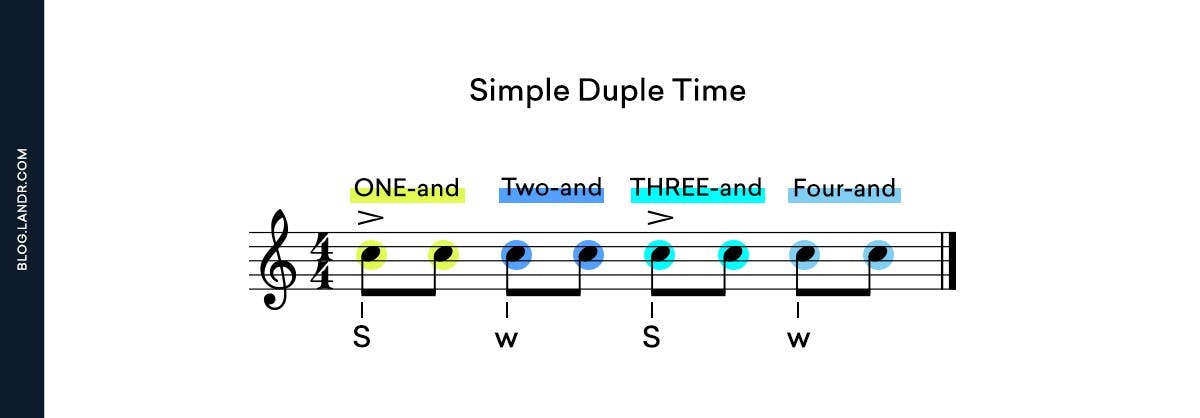Simple meter divides beats into two equal parts, while compound meter splits them into three equal parts. Grasping the distinction between simple vs. compound meter is fundamental music theory knowledge for both musicians and music producers.
This understanding is particularly valuable when crafting and arranging music with diverse rhythmic qualities and grooves. In this article, we will delve into the disparities between simple and compound meter, provide guidance on recognizing them, and emphasize their significance in music comprehension and creation.
Differences between simple meter and compound meter
Simple meter and compound meter are two common types of time signatures in music. The key distinction lies in how the beat is subdivided. Simple meter divides the beat into two equal parts, whereas compound meter divides it into three equal parts.
To simplify, simple meter is built on duple subdivisions (halving the beat), while compound meter relies on triple subdivisions (dividing the beat into thirds). This difference in subdivision imparts a unique rhythmic character to each.
Generally, simple meter tends to have a more straightforward and predictable rhythm, while compound meter often creates a complex and syncopated feel.
Identifying simple and compound meter
Sometimes, telling if music has simple or compound meter isn’t easy. Here are some simple tips to help you figure it out.





